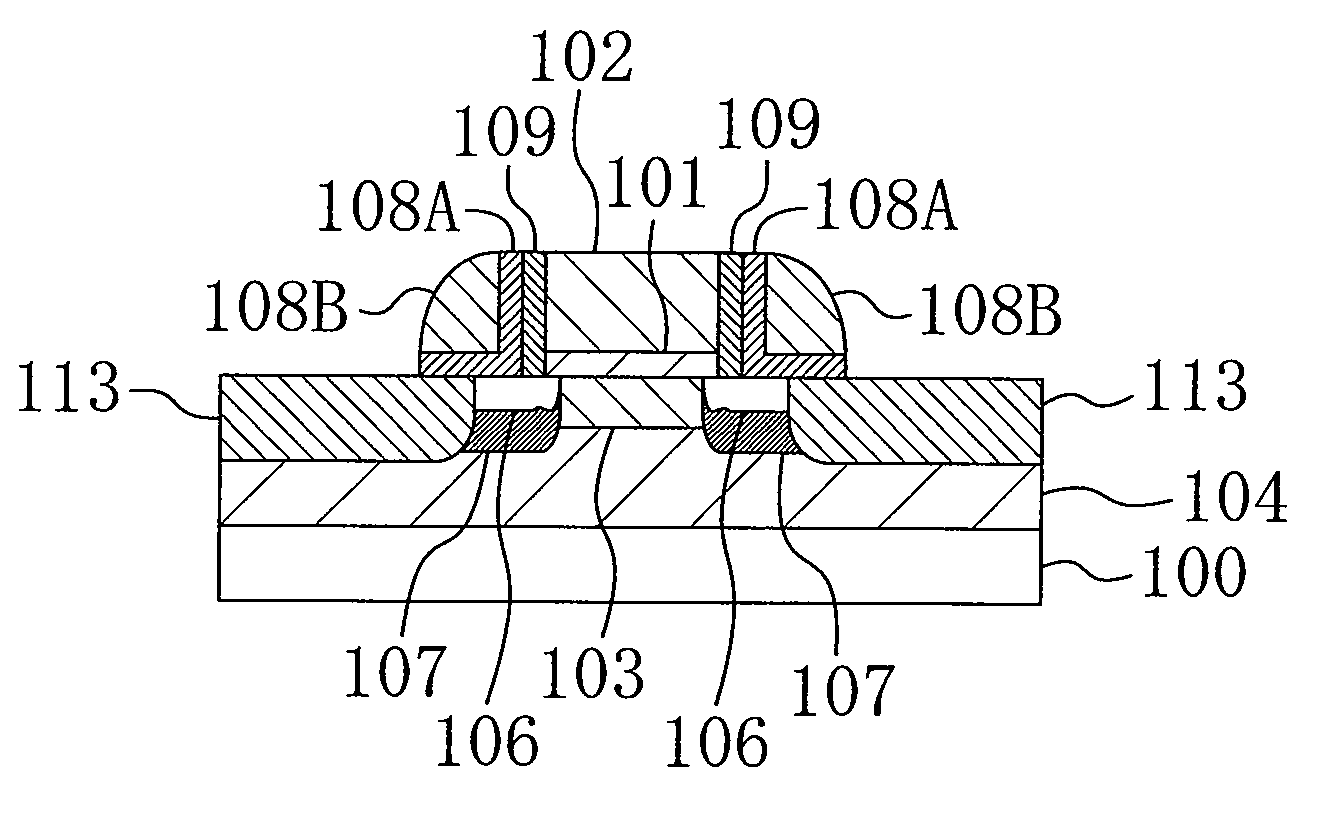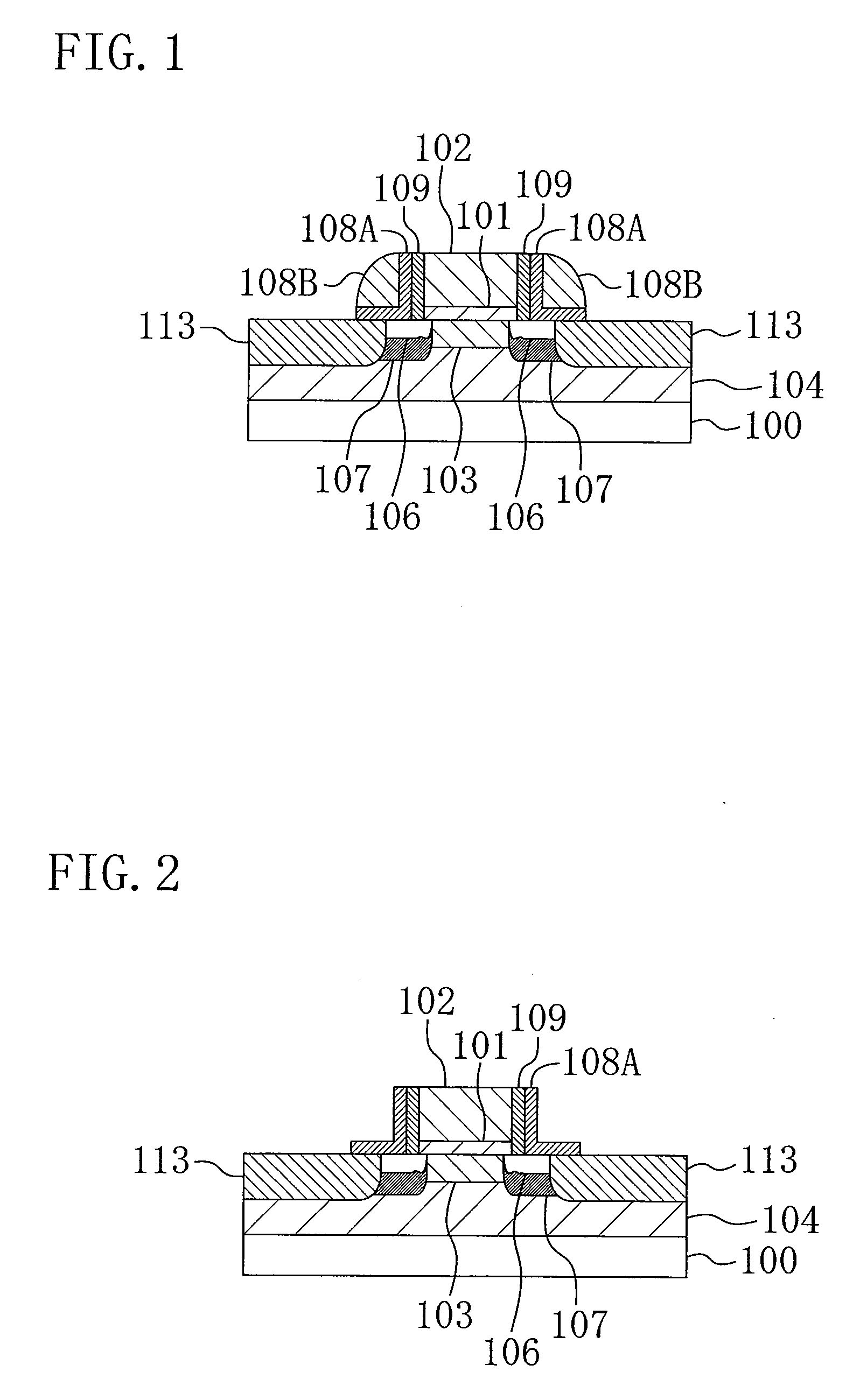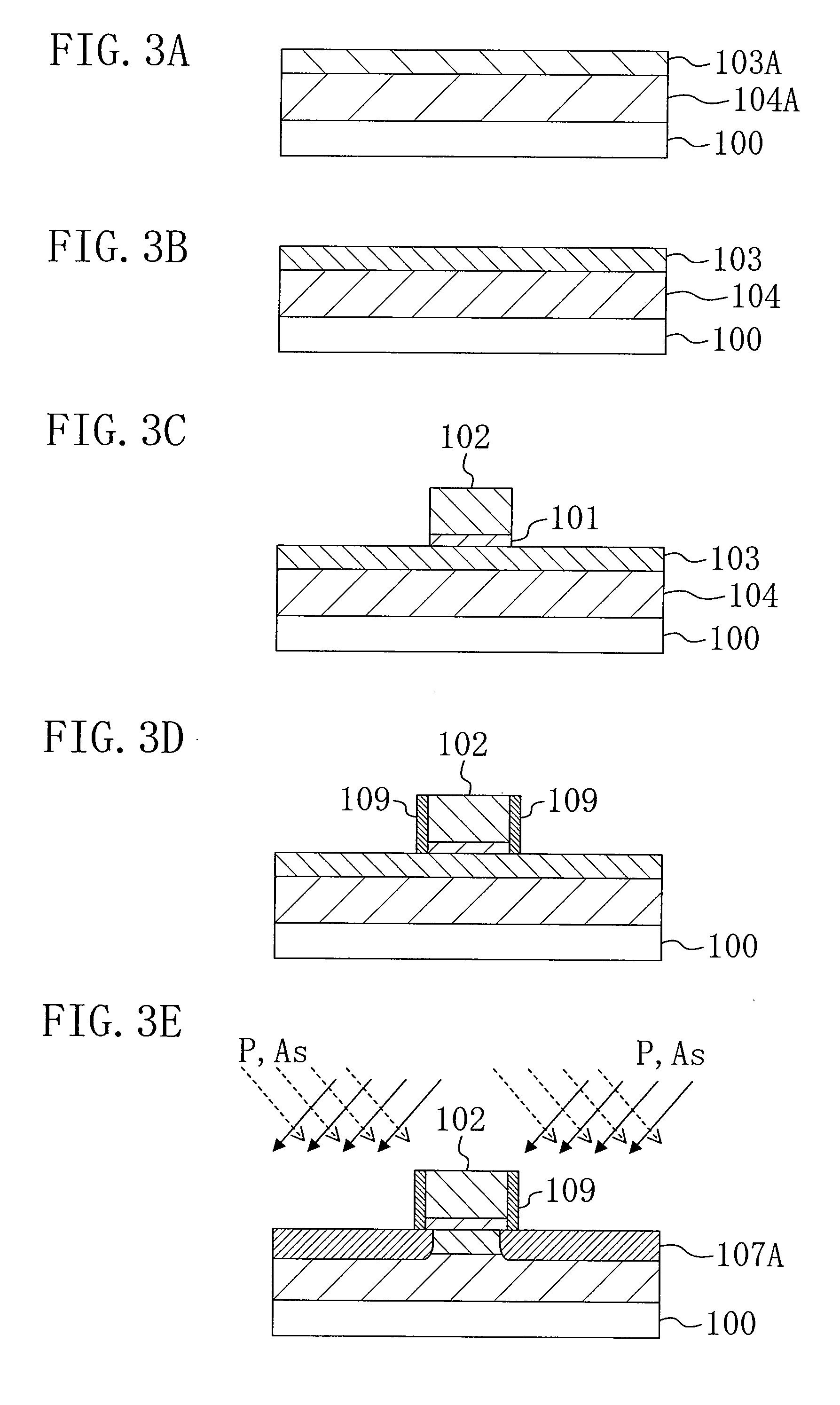Semiconductor device and method of fabrication
a semiconductor and semiconductor technology, applied in the direction of semiconductor devices, electrical devices, transistors, etc., can solve the problems of difficult to obtain the desired shallow and low-resistant diffusion layer, excess point defects are often generated, and the desired impurity profile cannot be obtained in the p-type extension diffusion layer, etc., to achieve the effect of improving the drive capability of the transistor, reducing the resistance, and high drive capability
- Summary
- Abstract
- Description
- Claims
- Application Information
AI Technical Summary
Benefits of technology
Problems solved by technology
Method used
Image
Examples
first embodiment
Variation of First Embodiment
[0072]FIG. 2 is a cross-sectional view showing a structure of a semiconductor device according to a variation of the first illustrative embodiment. As shown in FIG. 2, in the semiconductor device of this variation, first sidewalls 108A and second sidewalls 108B contain fluorine, while P-type source and drain diffusion layers 113 contain fluorine (F) and carbon (C).
[0073]Also, in the semiconductor device of this variation, the second sidewalls 108B are removed. Thus, the second sidewalls 108B are removed before thermal processing for forming the P-type source and drain diffusion layers 113. Therefore, it is possible to prevent fluorine from being diffused from the second sidewalls 108B into P-type extension high-concentration diffusion layers 106 and the P-type source and drain diffusion layers 113 during thermal diffusion.
[0074]Hereinafter, a method for fabricating the semiconductor device of FIG. 1 will be described with reference to the drawings.
[0075]...
second embodiment
[0111]Hereinafter, a second illustrative embodiment will be described with reference to the drawings. A difference between the first and second embodiments will be described, referring to their fabrication methods.
[0112]FIGS. 9A to 9D and 10A to 10D are cross-sectional views showing a structure of a semiconductor device (MIS transistor) according to the second illustrative embodiment in the order in which major steps of a fabrication method thereof are performed.
[0113]Initially, as shown in FIG. 9A, as in the first embodiment, an N-type impurity (e.g., phosphorus (P) ions) is implanted by angled implantation into a semiconductor substrate 100 at an implantation energy of about 50 keV and an implantation dose of about 2×1013 / cm2 using offset spacers 109 and a gate electrode 102 as a mask. Next, an N-type impurity (e.g., arsenic (As) ions) is implanted by angled implantation at an implantation energy of about 80 keV and an implantation dose of about 1×1013 / cm2, thereby forming N-type ...
third embodiment
[0130]Hereinafter, a third illustrative embodiment will be described with reference to the drawings. A difference between the second and third embodiments will be described, referring to their fabrication methods.
[0131]FIGS. 11A to 11D and 12A to 12D are cross-sectional views showing a structure of a semiconductor device (MIS transistor) according to the third illustrative embodiment in the order in which major steps of a fabrication method thereof are performed.
[0132]Initially, as shown in FIG. 11A, as in the first embodiment, an N-type impurity (e.g., phosphorus (P) ions) is implanted by angled implantation into a semiconductor substrate 100 at an implantation energy of about 50 keV and an implantation dose of about 2×1013 / cm2 using offset spacers 109 and a gate electrode 102 as a mask. Next, an N-type impurity (e.g., arsenic (As) ions) is implanted by angled implantation at an implantation energy of about 80 keV and an implantation dose of about 1×1013 / cm2, thereby forming N-type...
PUM
 Login to View More
Login to View More Abstract
Description
Claims
Application Information
 Login to View More
Login to View More - R&D
- Intellectual Property
- Life Sciences
- Materials
- Tech Scout
- Unparalleled Data Quality
- Higher Quality Content
- 60% Fewer Hallucinations
Browse by: Latest US Patents, China's latest patents, Technical Efficacy Thesaurus, Application Domain, Technology Topic, Popular Technical Reports.
© 2025 PatSnap. All rights reserved.Legal|Privacy policy|Modern Slavery Act Transparency Statement|Sitemap|About US| Contact US: help@patsnap.com



